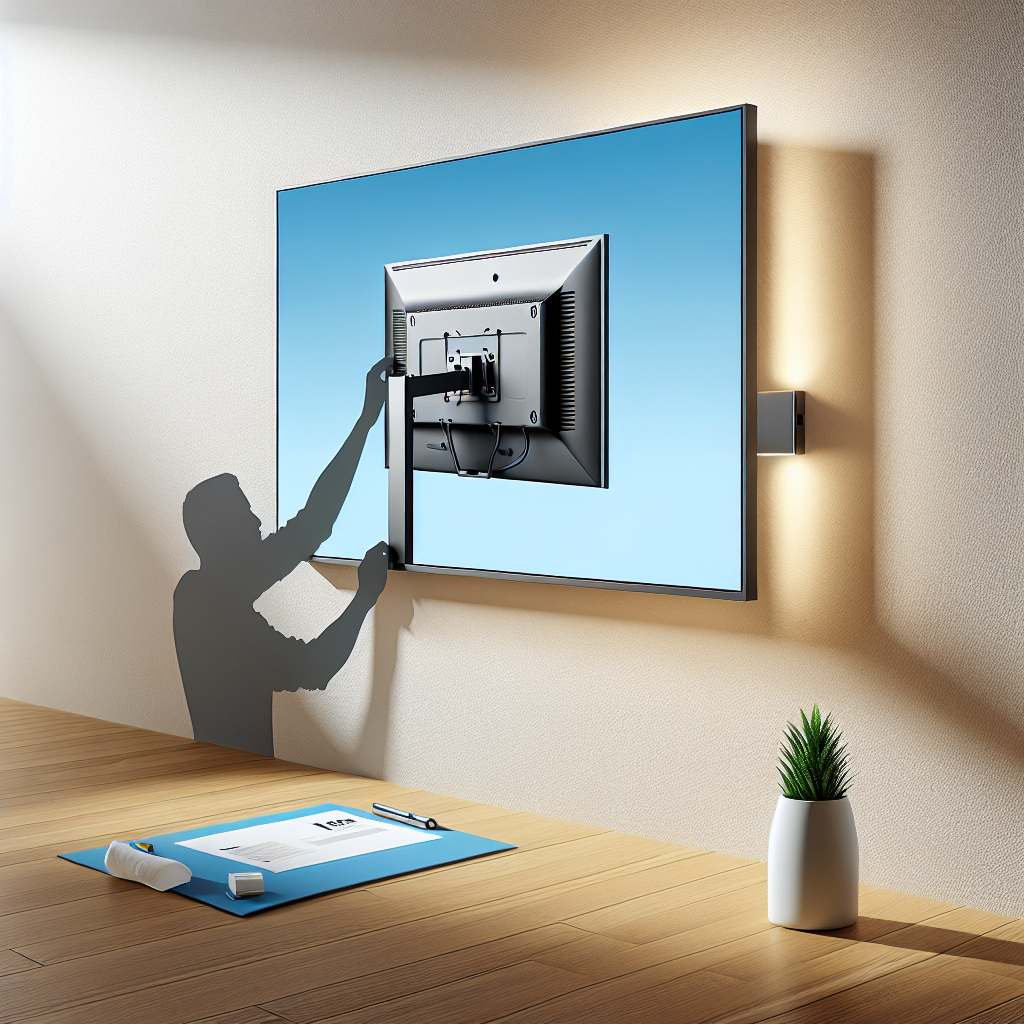Introduction
The option to wall mount an LED monitor can be a game-changer for many people, offering both aesthetic and practical benefits. But can LED monitors be wall mounted? The short answer is yes, most LED monitors can be wall-mounted. This article will explore the various considerations, benefits, and steps involved in mounting an LED monitor on the wall.
Benefits of Wall-Mounting an LED Monitor
Wall mounting an LED monitor has numerous advantages that range from improved workspace ergonomics to aesthetic improvements. Here’s an overview of the key benefits:
- Space saving: Wall-mounting eliminates the need for a bulky desk stand, freeing up valuable desk space for other uses.
- Better ergonomics: A wall-mounted monitor can be adjusted to the perfect height, reducing eye strain and improving posture.
- Aesthetic appeal: A sleek, wall-mounted monitor gives your workspace a modern and clean look.
- Improved viewing experience: Wall mounting can make it easier to achieve the ideal viewing angle, whether you’re watching movies, gaming, or working.
Considerations Before Wall Mounting
Before you proceed with wall mounting your LED monitor, there are several factors you need to consider to ensure a successful installation:
- Monitor compatibility: Ensure that your monitor has VESA mounting holes, which are standardized mounting points found on the back of most LED monitors.
- Wall type: The type of wall you have (drywall, concrete, etc.) will affect the mounting process and may require different tools and hardware.
- Weight capacity: Confirm that the wall mount you choose can support the weight of your monitor.
- Cable management: Plan how you will manage power and signal cables to keep them unobtrusive and organized.
VESA Mounting Standard
The VESA (Video Electronics Standards Association) standard is crucial for wall mounting as it dictates the placement and size of mounting holes on the back of the monitor. Here is a table detailing common VESA standards:
| VESA Standard | Distance Between Mounting Holes |
|---|---|
| VESA 75 | 75mm x 75mm |
| VESA 100 | 100mm x 100mm |
| VESA 200 | 200mm x 200mm |
| VESA 400 | 400mm x 400mm |
Tools and Materials Needed
To wall mount your LED monitor, you’ll need some essential tools and materials. Here’s a checklist to help you gather what you need:
- Wall mount bracket
- Screwdriver
- Drill and drill bits
- Stud finder (for drywall installations)
- Wall anchors or screws (appropriate for your wall type)
- Level
- Measuring tape
- Cable management solutions (optional)
Step-by-Step Guide to Wall Mounting an LED Monitor
Follow these steps to successfully wall mount your LED monitor:
Step 1: Choose the Right Wall Mount
Select a wall mount that is compatible with your monitor’s size, weight, and VESA hole pattern. There are different types of mounts available, such as fixed, tilting, and full-motion mounts, so choose based on your specific needs.
Step 2: Locate the Wall Studs
If you’re installing the mount on drywall, use a stud finder to locate the wall studs. Mark the positions where you will drill your pilot holes.
Step 3: Drill Pilot Holes
Using a drill bit appropriate for your wall type, drill the pilot holes where you marked earlier. This will make it easier to screw in the anchors or screws.
Step 4: Attach the Wall Mount Bracket
Secure the wall mount bracket to the wall using screws or anchors. Use a level to ensure the bracket is perfectly horizontal.
Step 5: Prepare the Monitor
Attach the mounting plate to the back of your LED monitor using the screws that came with the wall mount kit. Ensure the plate is securely fastened and properly aligned with the VESA holes.
Step 6: Mount the Monitor
Carefully lift the monitor and attach it to the wall mount bracket. Ensure it clicks or locks into place and is securely fastened.
Step 7: Manage the Cables
Finally, organize and secure the power and signal cables using cable clips or a cable management sleeve to keep them tidy and out of sight.
Conclusion
Wall mounting an LED monitor is a straightforward process that can significantly improve your workspace’s functionality and appearance. By considering compatibility, wall type, weight capacity, and proper cable management, you can achieve a successful installation. Follow our step-by-step guide, and you’ll be enjoying your wall-mounted LED monitor in no time.

